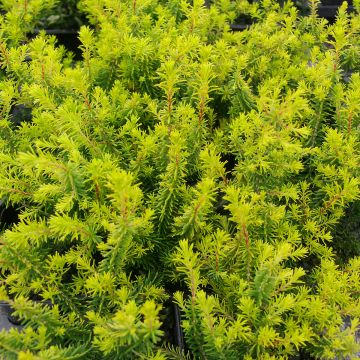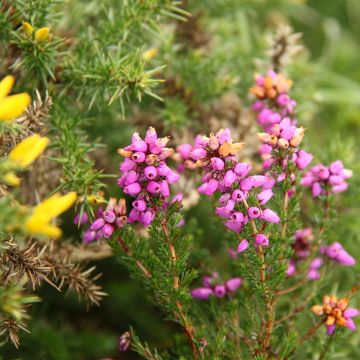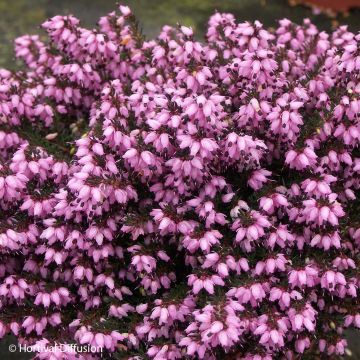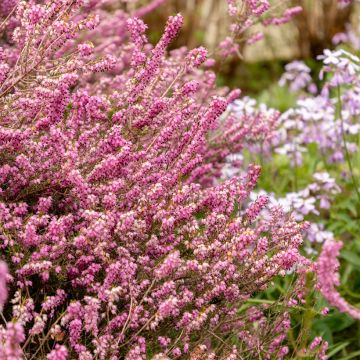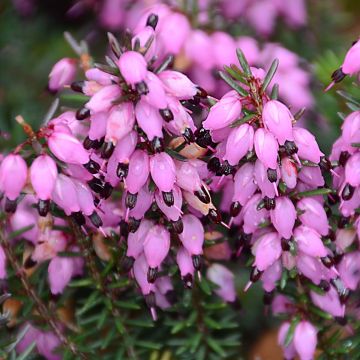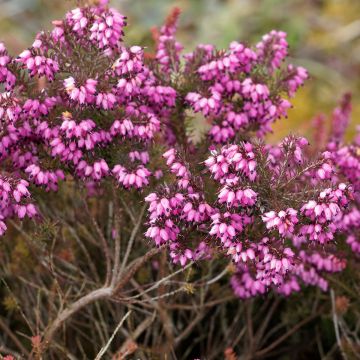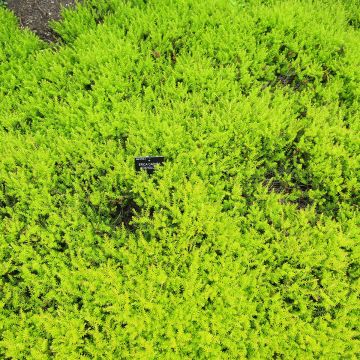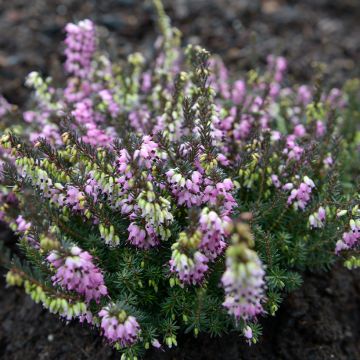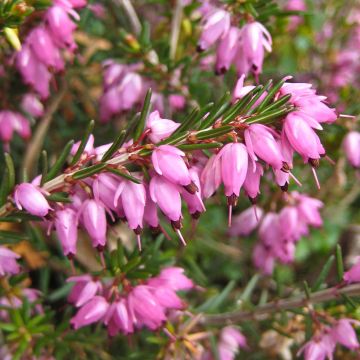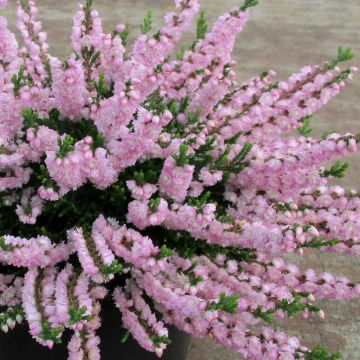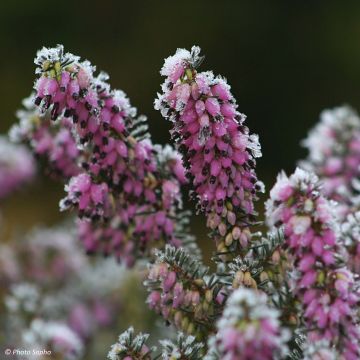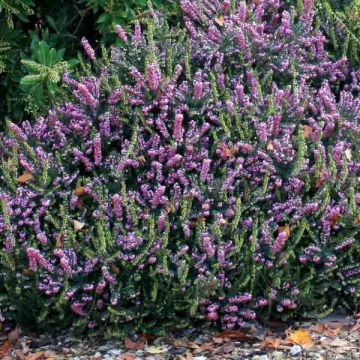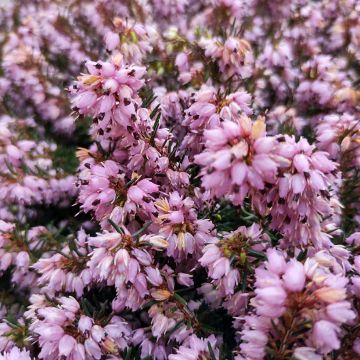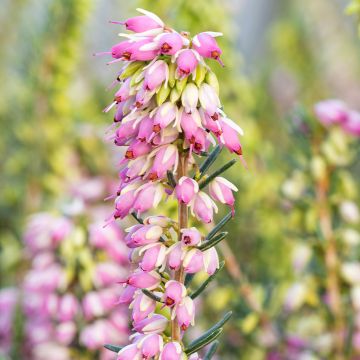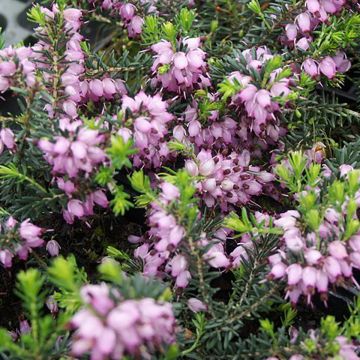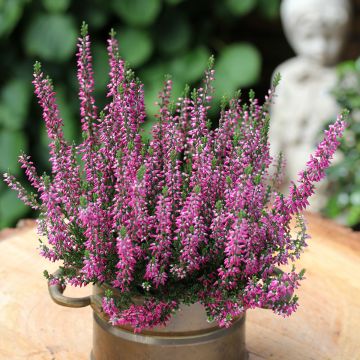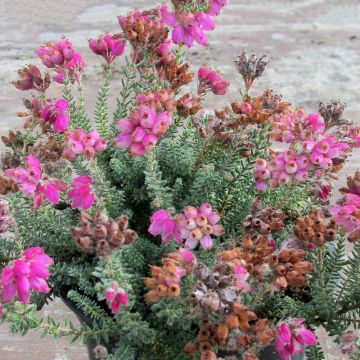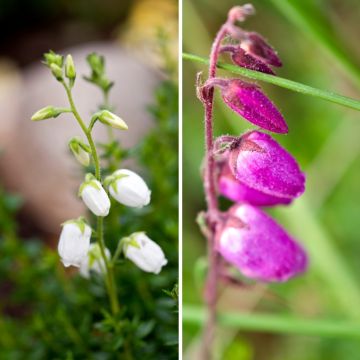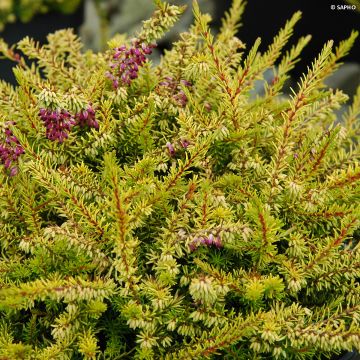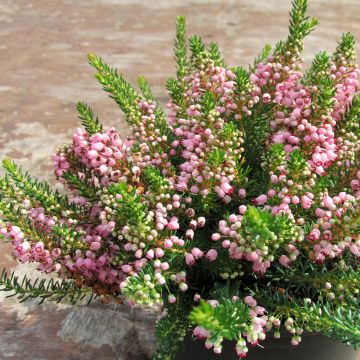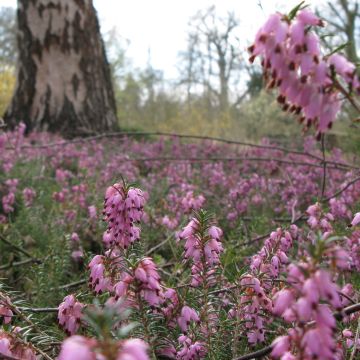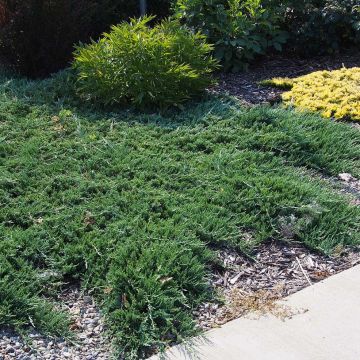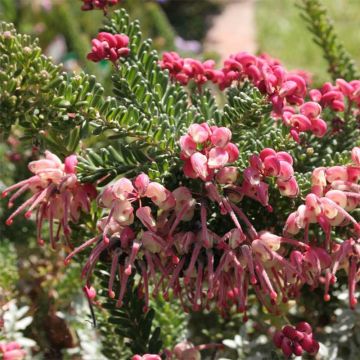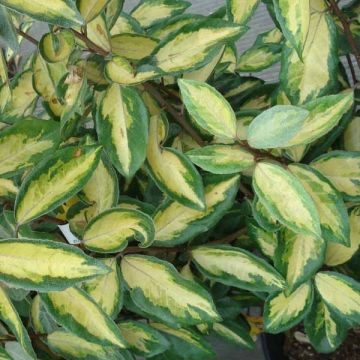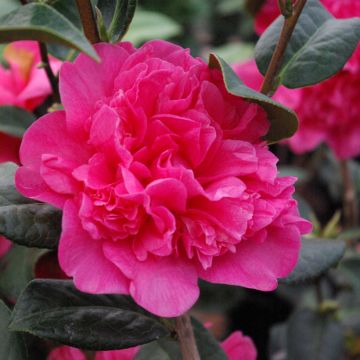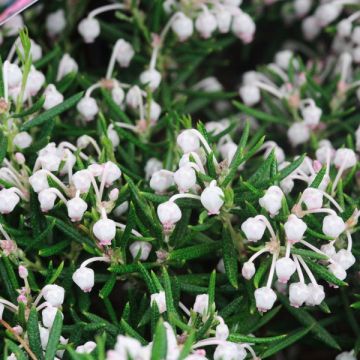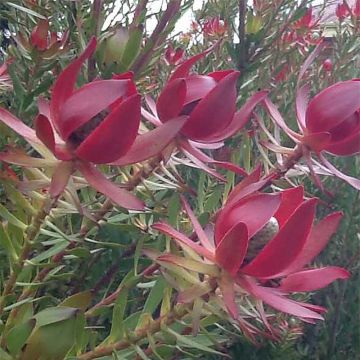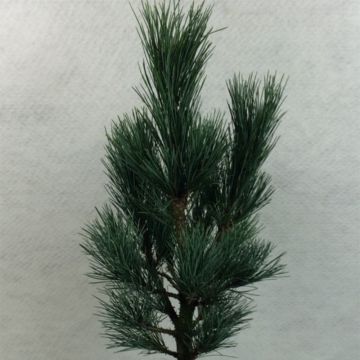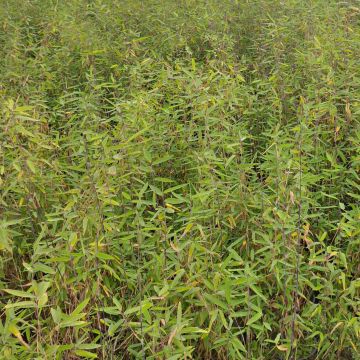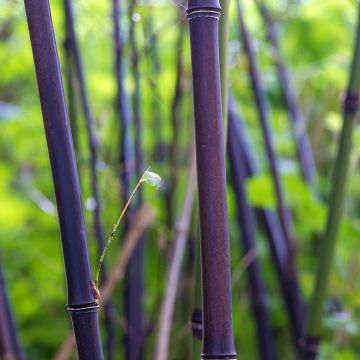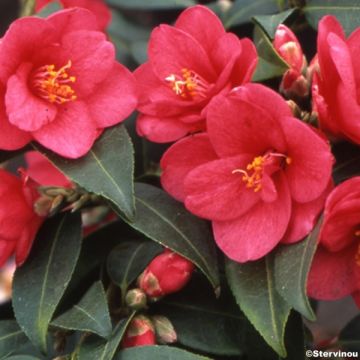Shipping country and language
Your country of residence may be:
Your country of residence is:
For a better user experience on our website, you can select:
Your shipping country:
Andorra
Austria
Belgium
Bulgaria
Canada
Chile
Croatia
Cyprus
Czechia
Denmark
Estonia
Finland
France
Germany
Greece
Hungary
Iceland
Ireland
Italy
Latvia
Lithuania
Luxembourg
Malta
Monaco
Netherlands
Poland
Portugal
Romania
Slovakia
Slovenia
Spain
Sweden
Switzerland
United Kingdom
We only deliver seed and bulb products to your country. If you add other products to your basket, they cannot be shipped.
Language:
French
German
Spanish
English
My Account
Hello
My wish lists
Plantfit
Log in / Register
Existing customer?
New customer?
Create an account to track your orders, access our customer service and, if you wish, make the most of our upcoming offers.
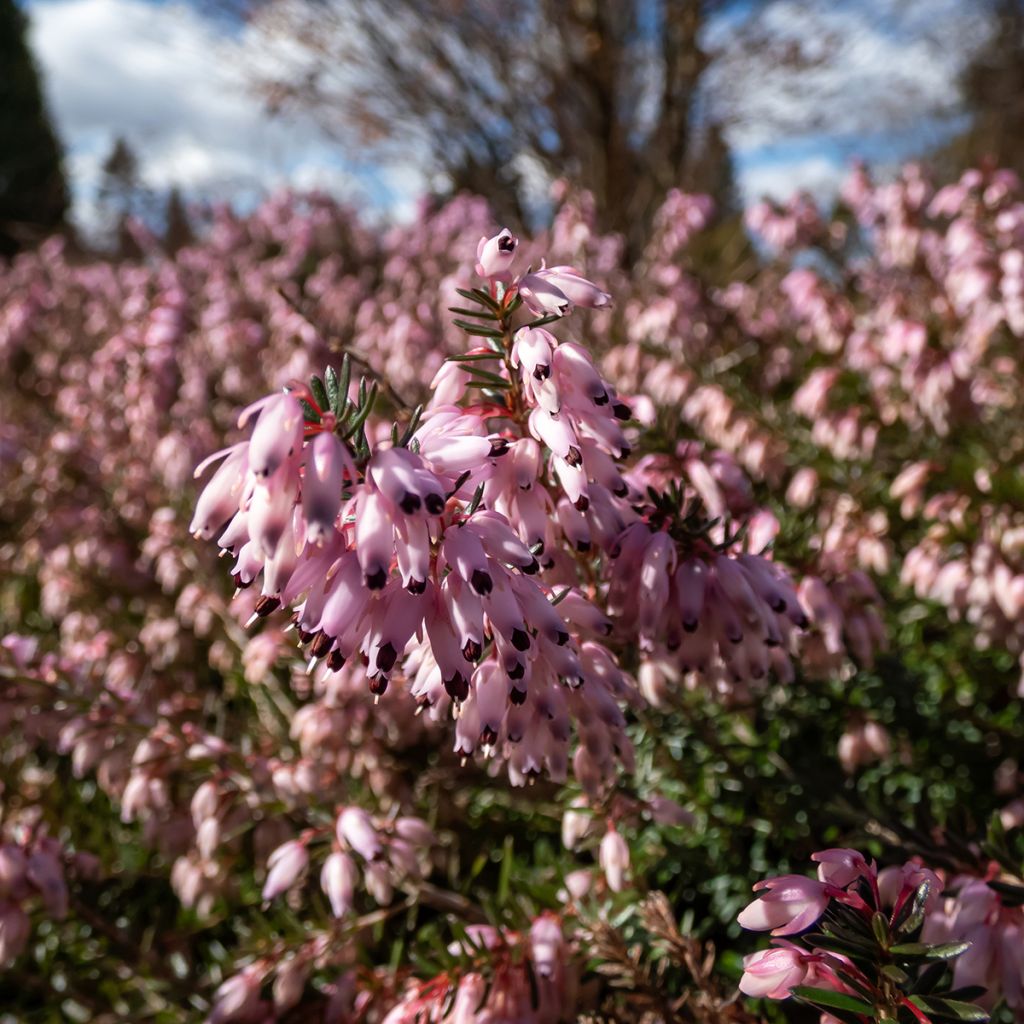

Erica carnea Pink Spangles
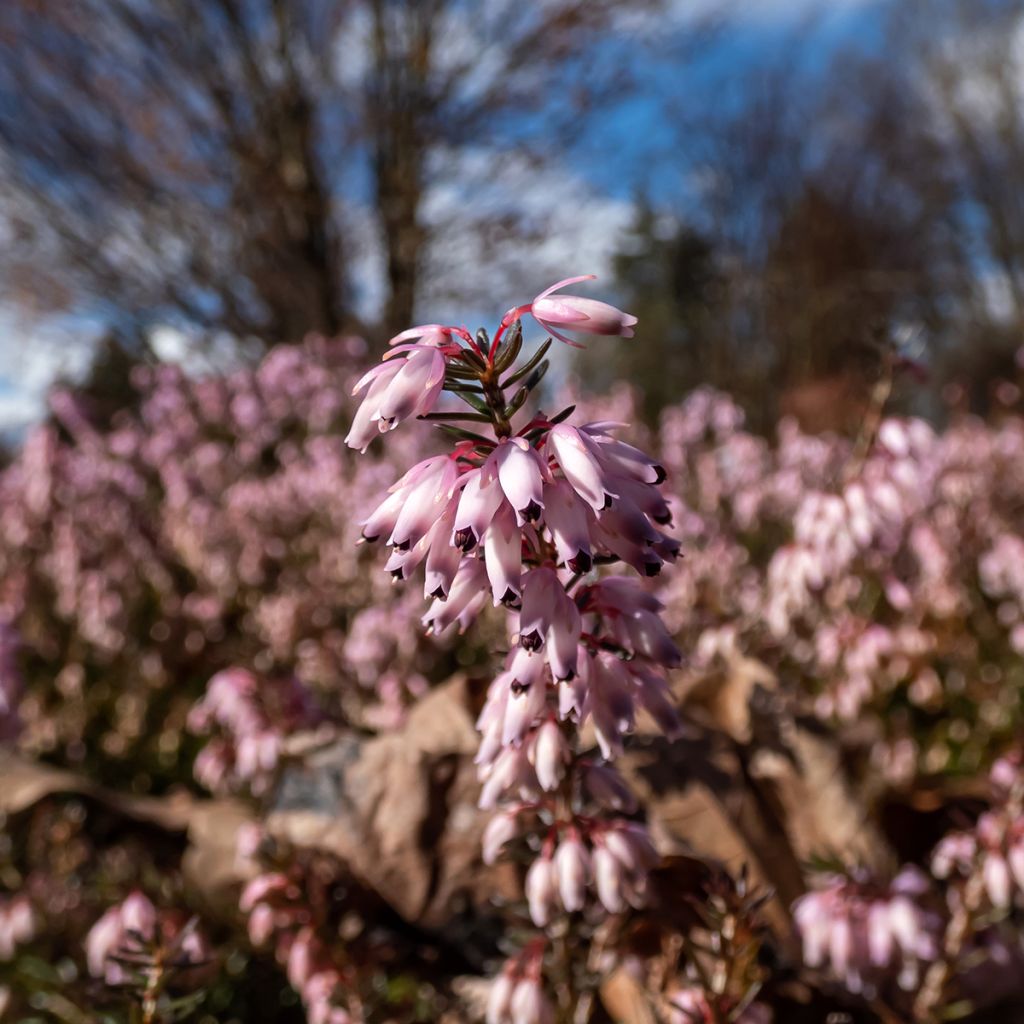

Erica carnea Pink Spangles
Erica carnea Pink Spangles
Erica carnea Pink Spangles
Why not try an alternative variety in stock?
View all →Order in the next for dispatch today!
Dispatch by letter from €3.90.
Delivery charge from €5.90 Oversize package delivery charge from €6.90.
More information
This item is not available in your country.
Schedule delivery date,
and select date in basket
This plant carries a 24 months recovery warranty
More information
We guarantee the quality of our plants for a full growing cycle, and will replace at our expense any plant that fails to recover under normal climatic and planting conditions.
From €5.90 for pickup delivery and €6.90 for home delivery
Express home delivery from €8.90.
Does this plant fit my garden?
Set up your Plantfit profile →
Description
Erica carnea Pink Spangles is a variety of Winter Heath that has been awarded the Royal Horticultural Society's Award of Garden Merit. It is distinguished by large bicoloured flowers that range from seashell pink to soft pink, then darken to mauve. Its low, spreading, bright medium green foliage, characterises a vigorous and prostrate variety that covers itself with lime green buds before blooming into light pink flowers. This long-flowering heather tolerates limestone soils, pollution, and sea spray. It thrives in full sun or partial shade in well-drained soil.
'Pink Spangles' Erica carnea belongs to the heather family. It is one of the many descendants of Erica carnea native to the limestone Alps. The plant forms an undershrub with a prostrate and spreading habit, reaching 15 cm in height and 30 to 45 cm in width. Its growth is relatively slow, with a lifespan of about fifteen years. In winter and until spring, from January-February to May, it produces delicate, small, light pink urn-shaped flowers. The bells are arranged in clusters that are 5 to 10 cm long at the tips of the leafy stems. The flowering is nectar-rich, providing a valuable source of pollen and nectar for bumblebees, hoverflies, and other bees in early spring. The evergreen foliage consists of very narrow, erect, medium-green leaves.
The alpine heather 'Pink Spangles' thrives at the base of deciduous or evergreen shrubs that provide light shade. It makes a good ground cover in rock gardens or on slopes. Plant it en masse in a heather garden for a mosaic of colours. Use it in pots alongside taller plants. In borders, plant it alongside Hellebores, small sedges like Carex comans 'Frosted Curls', or at the base of Cornus sanguinea.
While heathers, particularly the Erica genus, are often associated with the damp Atlantic heathlands of Brittany, Ireland, or Scotland, there are also heathers that thrive in dry climates and on limestone soils, such as those found in Mediterranean regions. However, one of the richest areas in the world for heathers is located far away in South Africa. In the Cape region, there is a plant formation on acidic soil, similar to our Mediterranean scrub vegetation, called Fynbos, which is home to nearly 625 heather species out of the 740 that exist worldwide.
Erica carnea Pink Spangles in pictures


Plant habit
Flowering
Foliage
Botanical data
Erica
carnea
Pink Spangles
Ericaceae
Cultivar or hybrid
Other Heather
Planting and care
Erica carnea 'Pink Spangles' prefers a soil that is not too rich in organic matter, it adapts very well to poor soils. However, it should be light, sandy, slightly acidic, neutral to limestone, and well-drained. Plant in autumn or spring, without burying the collar too much. This plant appreciates non-scorching full sun or partial shade. During the first two years, carefully weed around the base. Adapted to dry environments, the roots of this heather are highly branched in the soil and prevent the establishment of other species nearby once they are well established. In case of prolonged drought, mulch the base to maintain some moisture. Erica can be susceptible to phytophthora (root rot), pythium, and rhizoctonia during hot and humid periods.
Planting period
Intended location
Care
This item has not been reviewed yet - be the first to leave a review about it.
Evergreen shrubs
Haven't found what you were looking for?
Hardiness is the lowest winter temperature a plant can endure without suffering serious damage or even dying. However, hardiness is affected by location (a sheltered area, such as a patio), protection (winter cover) and soil type (hardiness is improved by well-drained soil).

Photo Sharing Terms & Conditions
In order to encourage gardeners to interact and share their experiences, Promesse de fleurs offers various media enabling content to be uploaded onto its Site - in particular via the ‘Photo sharing’ module.
The User agrees to refrain from:
- Posting any content that is illegal, prejudicial, insulting, racist, inciteful to hatred, revisionist, contrary to public decency, that infringes on privacy or on the privacy rights of third parties, in particular the publicity rights of persons and goods, intellectual property rights, or the right to privacy.
- Submitting content on behalf of a third party;
- Impersonate the identity of a third party and/or publish any personal information about a third party;
In general, the User undertakes to refrain from any unethical behaviour.
All Content (in particular text, comments, files, images, photos, videos, creative works, etc.), which may be subject to property or intellectual property rights, image or other private rights, shall remain the property of the User, subject to the limited rights granted by the terms of the licence granted by Promesse de fleurs as stated below. Users are at liberty to publish or not to publish such Content on the Site, notably via the ‘Photo Sharing’ facility, and accept that this Content shall be made public and freely accessible, notably on the Internet.
Users further acknowledge, undertake to have ,and guarantee that they hold all necessary rights and permissions to publish such material on the Site, in particular with regard to the legislation in force pertaining to any privacy, property, intellectual property, image, or contractual rights, or rights of any other nature. By publishing such Content on the Site, Users acknowledge accepting full liability as publishers of the Content within the meaning of the law, and grant Promesse de fleurs, free of charge, an inclusive, worldwide licence for the said Content for the entire duration of its publication, including all reproduction, representation, up/downloading, displaying, performing, transmission, and storage rights.
Users also grant permission for their name to be linked to the Content and accept that this link may not always be made available.
By engaging in posting material, Users consent to their Content becoming automatically accessible on the Internet, in particular on other sites and/or blogs and/or web pages of the Promesse de fleurs site, including in particular social pages and the Promesse de fleurs catalogue.
Users may secure the removal of entrusted content free of charge by issuing a simple request via our contact form.
The flowering period indicated on our website applies to countries and regions located in USDA zone 8 (France, the United Kingdom, Ireland, the Netherlands, etc.)
It will vary according to where you live:
- In zones 9 to 10 (Italy, Spain, Greece, etc.), flowering will occur about 2 to 4 weeks earlier.
- In zones 6 to 7 (Germany, Poland, Slovenia, and lower mountainous regions), flowering will be delayed by 2 to 3 weeks.
- In zone 5 (Central Europe, Scandinavia), blooming will be delayed by 3 to 5 weeks.
In temperate climates, pruning of spring-flowering shrubs (forsythia, spireas, etc.) should be done just after flowering.
Pruning of summer-flowering shrubs (Indian Lilac, Perovskia, etc.) can be done in winter or spring.
In cold regions as well as with frost-sensitive plants, avoid pruning too early when severe frosts may still occur.
The planting period indicated on our website applies to countries and regions located in USDA zone 8 (France, United Kingdom, Ireland, Netherlands).
It will vary according to where you live:
- In Mediterranean zones (Marseille, Madrid, Milan, etc.), autumn and winter are the best planting periods.
- In continental zones (Strasbourg, Munich, Vienna, etc.), delay planting by 2 to 3 weeks in spring and bring it forward by 2 to 4 weeks in autumn.
- In mountainous regions (the Alps, Pyrenees, Carpathians, etc.), it is best to plant in late spring (May-June) or late summer (August-September).
The harvesting period indicated on our website applies to countries and regions in USDA zone 8 (France, England, Ireland, the Netherlands).
In colder areas (Scandinavia, Poland, Austria...) fruit and vegetable harvests are likely to be delayed by 3-4 weeks.
In warmer areas (Italy, Spain, Greece, etc.), harvesting will probably take place earlier, depending on weather conditions.
The sowing periods indicated on our website apply to countries and regions within USDA Zone 8 (France, UK, Ireland, Netherlands).
In colder areas (Scandinavia, Poland, Austria...), delay any outdoor sowing by 3-4 weeks, or sow under glass.
In warmer climes (Italy, Spain, Greece, etc.), bring outdoor sowing forward by a few weeks.
